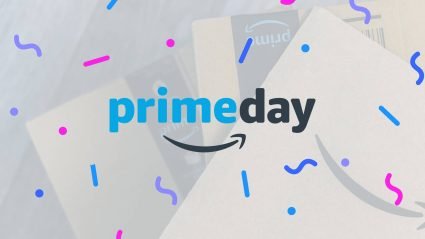Amazon has quickly ascended to becoming one of the top advertisers in the country, beating out the likes of Microsoft in the process.
Speaking to the company’s meteoric rise in the ad space, Amazon advertising revenue topped $10 billion in 2018 and is expected to grow by 470 percent by 2023, meaning that as more dollars are poured into Amazon’s advertising platform, retailers will find themselves competing in an increasingly fierce promotional space.
The fact is that more Amazon advertisers means greater demand, which means higher CPC. When merchants are confronted with a greater CPC, they are also staring down a higher Amazon ACoS (Advertising Cost of Sale).
Therefore, it is more crucial than ever that Amazon sellers come to understand PPC ACoS and learn to lower it as the platform becomes increasingly crowded. Make no mistake: This is a tall order in the face of elevated levels of demand.
ACoS on Amazon is extremely important for cultivating successful advertising strategies as this metric is a seller’s guiding force. Amazon ACoS is the measure of a campaign’s effectiveness, a percentage that informs bidding tactics and a benchmark by which the success of an advertising push is measured.
For those who are in the market for Amazon advertising tips that will help lower their ACoS on Amazon, look no further.
Here is everything merchants need to know about Amazon ACoS, how it is calculated, why it is so dang essential and how sellers can optimize campaigns to produce the best ACoS possible.
Let’s get started.
What Is ACoS on Amazon?
In a nutshell, Amazon ACoS is the ratio of ad spend to ad revenue generated through the platform, expressed as a percentage. Fortunately, calculating ACoS is simple as the formula is:
ACoS = Total Ad Spend ÷ Total Sales x 100
Amazon ACoS definitively tells sellers what percent of each dollar earned via advertising was spent on the ad campaign.
To help illustrate this concept, here is an example of ACoS at work:
A seller spends $20 to advertise a new product on Amazon. Using Amazon Display ads, the campaign generates $60 in sales. From here, the merchants can plug the number into the formula above as follows:
ACoS = 20 ÷ 60 x 100
ACOS ≈ 33%
Since the advertiser’s Amazon ACoS is equal to approximately 33 percent, this means that they are spending $0.33 for every dollar earned.
Therefore, if the merchant calculates their profit margin and finds it to be 30 percent, they are losing money on their advertising campaign and must establish strategies to lower their ACoS. This means that in order to increase Amazon advertising revenue and remain profitable, the retailer must get their ACoS lower than their profit margin.
For instance, if the sellers spend $10 on the campaign instead of $20, their Amazon ACoS would be approximately 16 percent, meaning that they would still have 14 percent of the sale to invest back into their business. Understanding this breakdown, let’s explore the importance of Amazon ACoS.
Understanding this breakdown, let’s explore the importance of Amazon ACoS.
Why Amazon ACoS Is Crucial
Much like ROAS for PPC campaigns run through Google, Amazon ACoS is a vital metric for understanding how well an ad push has performed.
What makes Amazon ACoS so important is that it enables sellers to track all of their advertising costs and figure out how much they will make from a campaign.
However, when just getting started advertising on Amazon, retailers are likely to have a high ACoS as they refine their Amazon marketing techniques for better performance. Therefore, it is crucial for sellers to be patient and methodically implement tactics that will lower their Amazon ACoS.
Additionally, Amazon ACoS can help merchants to establish their break-even point. It is essential to understand where this position is located so that retailers can aim to exceed this figure.
Finding the ACoS Break-Even Point
The Amazon ACoS break-even point is when the campaign’s advertising cost is equal to its profit margin. Understanding where this point is, lets retailers know what is the absolute minimum a campaign must achieve not to lose money.
For example, let’s say a merchant is selling custom t-shirts for $25 a piece. The product costs $7 to produce and the retailer is paying $4 in Amazon fees for the item.
This means that the profit on the product is $16, before advertising costs. If all $16 were spent advertising to potential customers, then, utilizing the ACoS formula above:
ACoS = 14 ÷ 25 x 100
This means that the retailer’s break-even ACoS is 56 percent. Therefore, obtaining an ACoS on Amazon of 55 percent and lower means that the merchant will be turning a profit. Anything over 56 percent is costing the seller money.
Knowing where the break-even point resides is vital as this enables retailers to know where to set their target ACoS. However, while understanding how to calculate the break-even point is important, retailers should also understand what constitutes a good ACoS on Amazon.
ACoS Amazon: What Is a Good Figure?
While many retailers want a definitive answer to what a “good” ACoS is, the truth of the matter is that it is highly dependent on the retailer and their strategy.
Businesses have different goals when advertising on Amazon. Some seek to increase brand awareness, others are trying to maximize Amazon sales, while others still are aiming to optimize profits.
That said, there are some general guidelines that retailers can use to point them in the right direction. For instance, the average ACoS obtained by Amazon sellers is 30 percent. However, this is subject to change based on the goal of each campaign and the scale of the business.
What is a good figure?
Low ACoS
Under 25%
You are earning lots of conversions for a keyword. Therefore you may want to alter your Amazon bidding strategy and raise bids to maximize clicks and traffic.
Average ACoS
25-40%
You are on par with the average and should look for tactics to optimize your campaign and lower the ACoS for maximum profitability.
High ACoS
Above 40%
Likely indicative of a keyword driving clicks but failing to convert. You may want to go back to the drawing board with your Amazon keyword search.
Some general benchmarks that sellers can go by are:
- Low ACoS: If sellers are obtaining an ACoS under 25 percent, they are earning lots of conversions for a given keyword. Therefore, they may want to alter their Amazon bidding strategy and raise their bids to maximize clicks and traffic.
- Average ACoS: For those who generate an ACoS of 25 to 40 percent, they are on par with the average and should look for tactics to optimize their campaign and lower the ACoS for maximum profitability.
- High ACoS: An Amazon ACoS above 40 percent is likely indicative of a keyword driving clicks but failing to convert. In this situation, retailers may want to go back to the drawing board with their Amazon keyword research.
When aiming to maximize ACoS on Amazon, it is vital that retailers strike the right balance, as they do not want to spend too little and not gain enough exposure for a product. Still, they don’t want to overspend and eat into their profit margin, either.
Therefore, let’s look at some strategies that sellers can use to effectively lower their ACoS on Amazon.
How to Lower Amazon ACoS
For retailers to improve their Amazon ACoS, there are a variety of strategies they can implement, such as:
Utilize the Right Keywords
For sellers to reach audiences who are interested in buying, it is necessary to utilize the right keywords. When relevant keywords are employed, merchants are more likely to connect with the most relevant consumers without spending more money in the process.
The question then becomes how to find the right keywords.
Keyword research is the backbone of all Amazon SEO strategies, and much of the platform’s PPC pushes, as well. However, since Amazon keyword research is slightly different from the tactics a seller might employ with Google, it is advisable that merchants utilize an Amazon-specific keyword research tool such as:
- KeywordTool.io
- Sonar
- MerchantWords
With the right words uncovered, retailers can begin targeting them with their Amazon Sponsored Products campaigns and other keyword-driven adverts.
By implementing highly-relevant keywords, retailers can reel in more consumers who are likely to convert, thereby helping to optimize their campaign’s ACoS.
Employ Negative Keywords
Using negative keywords for PPC ads is an ideal tactic for keeping a campaign’s ACoS low. Negative keywords give retailers the ability to control which terms their ads do not surface for, thereby helping to improve the relevance of campaigns, which serves to elevate their profitability.
Sellers can utilize the keyword research tools mentioned above to identify terms that surface for but are not relevant to, the ASINs set to be advertised in the campaign. By including such terms in a campaign from the outset, it is far more likely that retailers will keep their ACoS on Amazon low and profits high.
Another way that sellers can find and implement negative keywords is to:
- Generate an auto-targeting campaign and a manual targeting campaign simultaneously using broad and phrase match keywords.
- After ads have accumulated enough clicks, analyze the search term query report, filtering by search terms that receive over 15 clicks and zero orders.
- Include these terms into the campaign’s negative keyword list.
However, do be aware that retailers cannot add negative keywords to auto-targeting campaigns through the AMS console, but it is possible to do so through the API.
Optimize Product Listings
When Amazon advertisers successfully get consumers to click-through to a product page, it is critical that they are presented with relevant phrases and optimized listings that persuade shoppers to convert.
The fact is that Amazon utilizes the keywords employed in product listings to determine relevance. If a merchant’s listings are not relevant to the product, there is an excellent chance that they will see fewer conversions and a lower ACoS on Amazon.
Optimizing Amazon product listings requires that retailers not only include the necessary information the consumers want to know about a product but that they also highlight the benefits that a customer will receive from an item, write succinct bullet points, feature stunning images and other optimized elements.
The more relevant the information is to Amazon and the consumer, the more likely retailers are to hit their target ACoS on Amazon.
Optimize Product Titles
Product titles are one of the most critical aspects of an Amazon listing, as this is the first thing that consumers see when they visit a page. To reel in more relevant leads, optimizing the product title is a must.
Product titles should center on relevant keywords and information related to the product. For instance, if a retailer is selling a winter jacket, what information might they expect to see in the title? Details that sellers might feature include:
- Materials
- Patterns
- Colors
- Sizes
This type of information is helpful in getting consumers to read more about a product after clicking on an advert, as it is likely to be relevant to their search query.
Assuming that the merchant has also optimized the product listing, there is a good chance that shoppers will convert, thereby aiding in making the campaign profitable and keeping the ACoS low.
Bid Appropriately Proper
PPC budgeting and bidding are critical for obtaining a favorable ACoS on Amazon. One of the most significant mistakes that a merchant can make is to bid either too high or too low, as either of these blunders could have a considerable impact on a brand’s Amazon ACoS.
However, sellers can establish a favorable bidding amount by utilizing the following formula:
(Average Order Value x Conversion Rate) ÷ (1÷ Target ACoS)
Using this formula, retailers can establish an estimated bidding amount that will help them to bid in a way that helps them to meet their target ACoS on Amazon.
Use an Amazon PPC Tool or Partner with an Ad Agency
There are a variety of Amazon PPC tools on the web that can help to automate particular processes, thereby aiding retailers in the quest for nailing their target ACoS.
Alternatively, by partnering with an experienced eCommerce advertising agency, retailers can ensure that their campaigns are managed by knowledgeable professionals who are more than capable of optimizing a campaign to reach a profitable Amazon ACoS.
ACoS on Amazon is an incredibly important metric for measuring the effectiveness of a promotional push within the marketplace. However, it is crucial to keep this figure in context with the campaign’s goals.
Sellers who wish to cultivate awareness or scale their business quickly are naturally going to have a higher ACoS than those who are optimizing their adverts for obtaining maximum profitability.
However, no matter which goal a merchant is after, reaching their target ACoS is a vital component to creating a successful campaign.
If your brand requires assistance in maximizing its Amazon advertising efforts and hitting its target ACoS, reach out to Visiture’s professional Amazon PPC management team. We can create a custom strategy that helps your brand to meet its goals on Amazon and build a commanding presence on the platform.






Responses